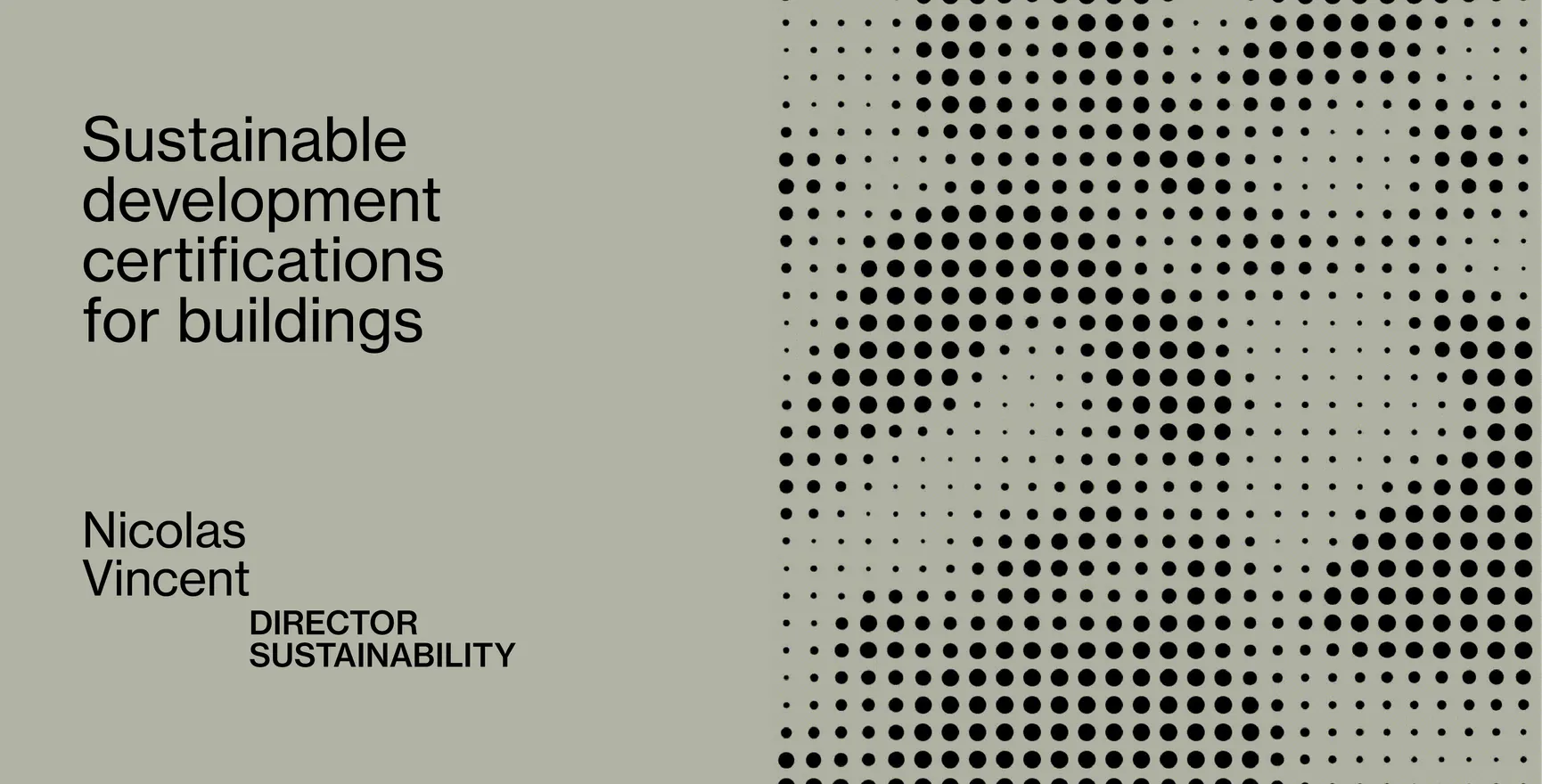Blog

Sustainable development certifications for buildings, by Nicolas Vincent
Numerous certifications and forms of recognition in sustainable development exist for buildings and infrastructures. To make the right choice, a deep understanding of these options is essential. Fortunately, at TST, we can help you make the right choice. Want to find out more? Read on!
Differentiating certification from benchmarking
Certification is formal recognition of a building’s compliance with specific, rigorous requirements. These certifications often have several levels, and the higher the level, the stricter the criteria. Certifications are available for both new construction and existing buildings. The most common certifications in Canada include LEED (Leadership in Energy and Environmental Design), BOMA BEST (Building Owners and Managers Association), Fitwel, WELL, Zero Carbon Building Standards (ZCB) and B Corp.
A benchmark assigns a score based on the relative performance of a building or portfolio of assets, but without requiring a minimum score. Benchmarks encourage comparison and continuous improvement. Key benchmarks include the ENERGY STAR Rating and the GRESB (Global Real Estate Sustainability Benchmark).
Choose the right recognition thanks to a well-thought-out strategy
Recognition should not be chosen at random. Rather, it should be guided by the target users and the type of infrastructure involved. In other words, who are the stakeholders and what type of building is being assessed?
LEED and BOMA BEST standards focus on environmental performance while considering the comfort and health of occupants. They offer municipal tax benefits, increase asset value, attract tenants and can positively influence lending conditions.
Fitwel and WELL certifications focus on the comfort, health and well-being of occupants. They are ideal for buildings that emphasize well-being, while enhancing the value of the asset and improving its attractiveness to tenants.
ZCB certification focuses exclusively on decarbonization. It contributes to the reduction of GHG emissions and can be included in municipal tax credit programs and give access to advantageous loan conditions, demonstrating a company’s strong commitment to sustainability.
B Corp is a certification that recognizes ESG (environmental, social and governance) efforts across the entire organization. It integrates ESG criteria not only at building level, but in all company activities.
The GRESB benchmark aims to assess the ESG performance of a portfolio of assets or a real estate development. It provides crucial information for investors, enabling a rigorous assessment of compliance with ESG criteria.
Finally, the ENERGY STAR rating evaluates and compares the energy performance of buildings. It is used in regulations and certifications and is recognized for, among other things, improving energy efficiency and reducing GHG emissions.
The choice of certification or benchmark must be aligned with the organization’s strategic objectives and values. To reduce environmental impact, LEED and BOMA BEST may be appropriate options. To promote occupant well-being, WELL and Fitwel are recommended. GRESB is ideal for a comprehensive ESG assessment, while ZCB and ENERGY STAR focus on reducing energy consumption and GHG emissions.
Understanding their influence
Although certifications and benchmarks have distinct characteristics, they can also complement each other. Indeed, the synergy between different programs can influence the path a company decides to take. For example, LEED or BOMA BEST certification can improve a company’s GRESB rating, while WELL certification can make it easier to obtain LEED certification, and vice versa.
In conclusion, it is important to do business with partners who have a thorough understanding of these recognitions in order to choose the right ones for a company. In this way, sustainability strategies can be optimized, and the associated benefits maximized.